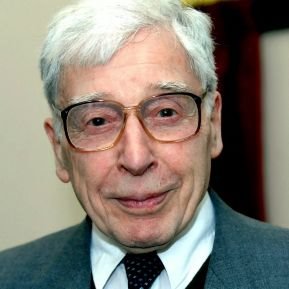Robert Edwards (physiologist) facts for kids
Quick facts for kids
Sir Robert Edwards
|
|
|---|---|
 |
|
| Born |
Robert Geoffrey Edwards
27 September 1925 Batley, England
|
| Died | 10 April 2013 (aged 87) near Cambridge, England
|
| Alma mater |
|
| Known for | Pioneering in-vitro fertilisation |
| Spouse(s) |
Ruth Fowler
(m. 1959) |
| Awards |
|
| Scientific career | |
| Fields |
|
| Institutions |
|
| Thesis | The experimental induction of heteroploidy in the mouse (1955) |
| Doctoral advisor | R. A. Beatty C. H. Waddington |
| Doctoral students | Richard Gardner (embryologist) Martin Hume Johnson Roger Gosden Azim Surani |
Sir Robert Edwards was a British scientist who helped many people have babies. He was a pioneer in reproductive medicine, which is a field that helps people have children.
With Dr. Patrick Steptoe and nurse Jean Purdy, he helped create the world's first 'test-tube baby,' Louise Brown. She was born on July 25, 1978. This was a huge step forward in medicine.
They also started the first program to help couples who couldn't have children naturally. They taught other scientists how to use their new methods. In 2010, Sir Robert Edwards won the Nobel Prize in Physiology or Medicine for his amazing work on in-vitro fertilisation (IVF).
Contents
Early Life and Learning
Robert Edwards was born in Batley, England, in 1925. He went to Manchester Central High School and then served in the British Army.
After his time in the army, he went to Bangor University to study biology. Later, he continued his studies at the University of Edinburgh. There, he earned his PhD in 1955.
His Work and Discoveries
After finishing his studies, Edwards worked at different places, including the California Institute of Technology. In 1963, he moved to the University of Cambridge.
How He Helped People Have Babies
Around 1960, Edwards started studying how human eggs are fertilised. He continued this important work at Cambridge.
In 1968, he successfully fertilised a human egg in a laboratory. This was a big breakthrough! He then teamed up with Patrick Steptoe, a surgeon from Oldham.
Edwards worked on creating special liquids to help human eggs fertilise and grow into early embryos. Steptoe used a special method called laparoscopy to collect eggs from women who had trouble getting pregnant.
Their work faced many challenges. Some people were against it, and they didn't get much funding. But they kept going because they believed in their research.
The First 'Test-Tube Baby'
On July 25, 1978, at 11:47 pm, Louise Brown was born at Oldham General Hospital. She was the world's first 'test-tube baby.' This event changed medical history forever. It gave hope to many couples who couldn't have children before. Nurse Jean Purdy was the first person to see Louise's embryo dividing.
Thanks to improvements in their methods, more and more babies have been born using IVF. By 2010, it's thought that about 4 million 'test-tube babies' had been born around the world.
Edwards and Steptoe opened the Bourn Hall Clinic. This clinic was a place to continue their research and teach new doctors and scientists. Steptoe passed away in 1988, but Edwards kept working as a scientist and editor of medical journals.
Awards and Recognitions
Sir Robert Edwards received many important awards for his life-changing work:
- He became a Fellow of the Royal Society in 1984. This is a very high honor for scientists in the UK.
- In 2001, he won the Albert Lasker Clinical Medical Research Award. This award recognized his development of IVF.
- In 2010, he was awarded the Nobel Prize in Physiology or Medicine. This is one of the most famous awards in the world for science.
- In 2011, he was made a Knight Bachelor by the Queen. This means he was given the title "Sir."
His Family Life
Robert Edwards married Ruth Fowler Edwards in 1956. She was also a scientist. Her grandfather was Ernest Rutherford, a famous Nobel Prize-winning physicist.
Robert and Ruth had five daughters and 12 grandchildren.
His Passing
Sir Robert Edwards passed away at his home near Cambridge, England, on April 10, 2013. He had been ill for a long time.
In July 2013, a special plaque was put up at the Bourn Hall Clinic. Louise Brown and Alastair MacDonald (the world's first 'test-tube' baby boy) were there to honor Steptoe and Edwards.
See also
 In Spanish: Robert Edwards para niños
In Spanish: Robert Edwards para niños


